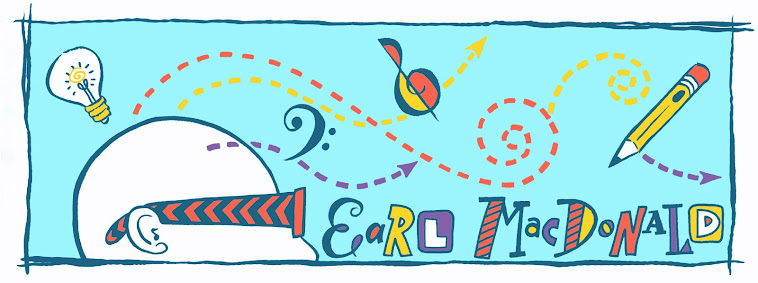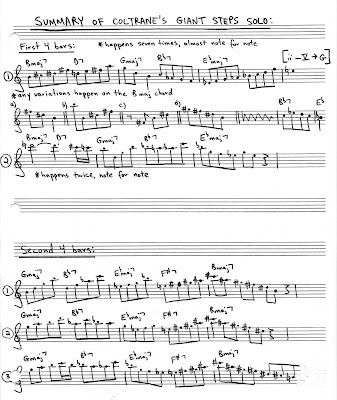During the past few days I constructed solos on paper for 26-2, and But Not For Me. I wrote four choruses for each tune, incorporating some of Coltrane's lines, my digital patterns, assorted vocabulary and some "linking material" of my own. Doing the same exercise for Satellite and Countdown is next on my practice agenda. My plan was to learn these solos up to tempo, record them and then post the recordings and written music here before day 30. Alas, that won't happen.
Before the end of the summer I do intend to bring some closure to this project, by recording and posting my written solos, as well as some "improvisations". I plan to play a few of these Coltrane pieces at my trio performance on July 22 in New Haven. Maybe I'll bring a video camera. In addition, I have scheduled myself to give a performance/presentation entitled "Countdown to Giant Steps" at a Music Convocation session at UConn at the beginning of the fall semester. I plan to keep these pieces in my repertoire for a while and look forward to being able to play them weekly at Lu's Cafe, starting in the fall. Kinks tend to work themselves out best on the bandstand.
I think this was a worthwhile process/endeavor for me on several levels:
- I have been attracted to these pieces for many years and wanted to be able to play them well. I'm almost there.
- I enjoyed being back on the piano bench daily, and this project has helped to relight that fire within me.
- I believe I will be a more effective teacher of this material after having put in the hours, sweating through it.
I hope my blog posts have been helpful and perhaps inspirational to young musicians (especially my current students). My advice to the young players reading this is to put in as many hours as you can now, because practice time will become a limited, precious commodity in a few years. I also think it is easier to learn this stuff when you younger.
...and now for a public service announcement:
The Hartford Jazz Society is presenting a concert by "The Cookers" on Friday, June 15, 2012. 7 PM,
at the Polish National Home, 60 Charter Oak Avenue - Hartford, CT.
Opening Group: East Catholic High School Jazz East Big Band (7 pm)
Student Jazz Workshop: The Polish National Home
Friday, 6/15/12, 4:30 PM – 6:00 PM
Billy Harper - tenor sax
Eddie Henderson - trumpet
David Weiss - trumpet
Craig Handy - alto sax
George Cables - piano
Cecil McBee - bass
Billy Hart - drums
Tickets: $15 in advance / $20 at door
To secure your tickets please use the PayPal link here, or call The Hartford Jazz Society at (860) 242-6688
Perhaps I will see you there.




















